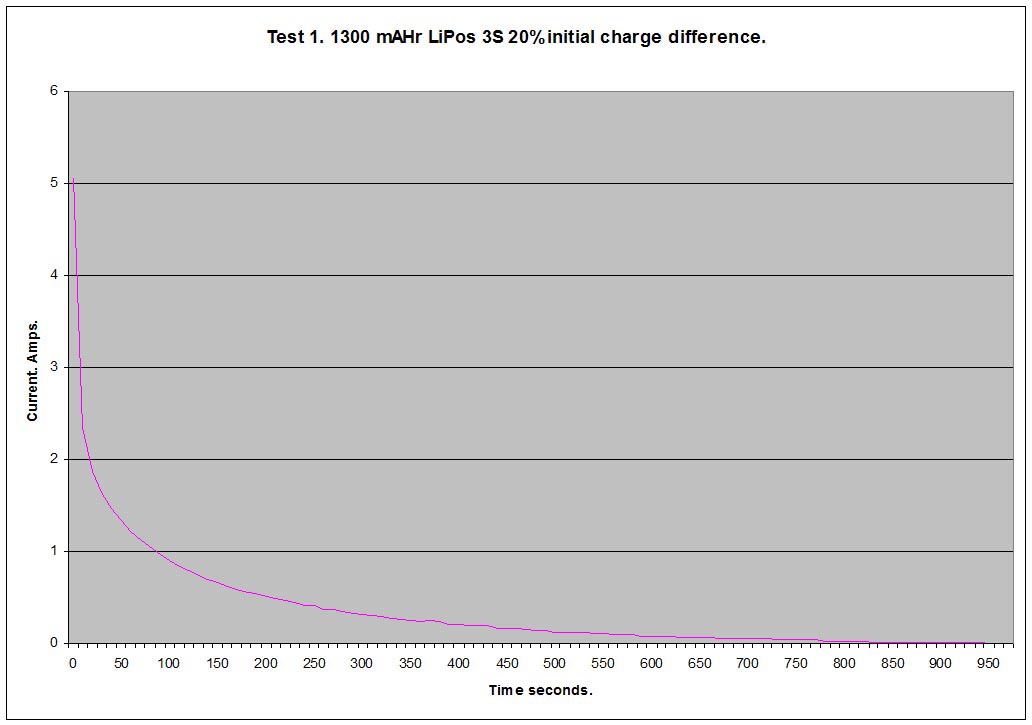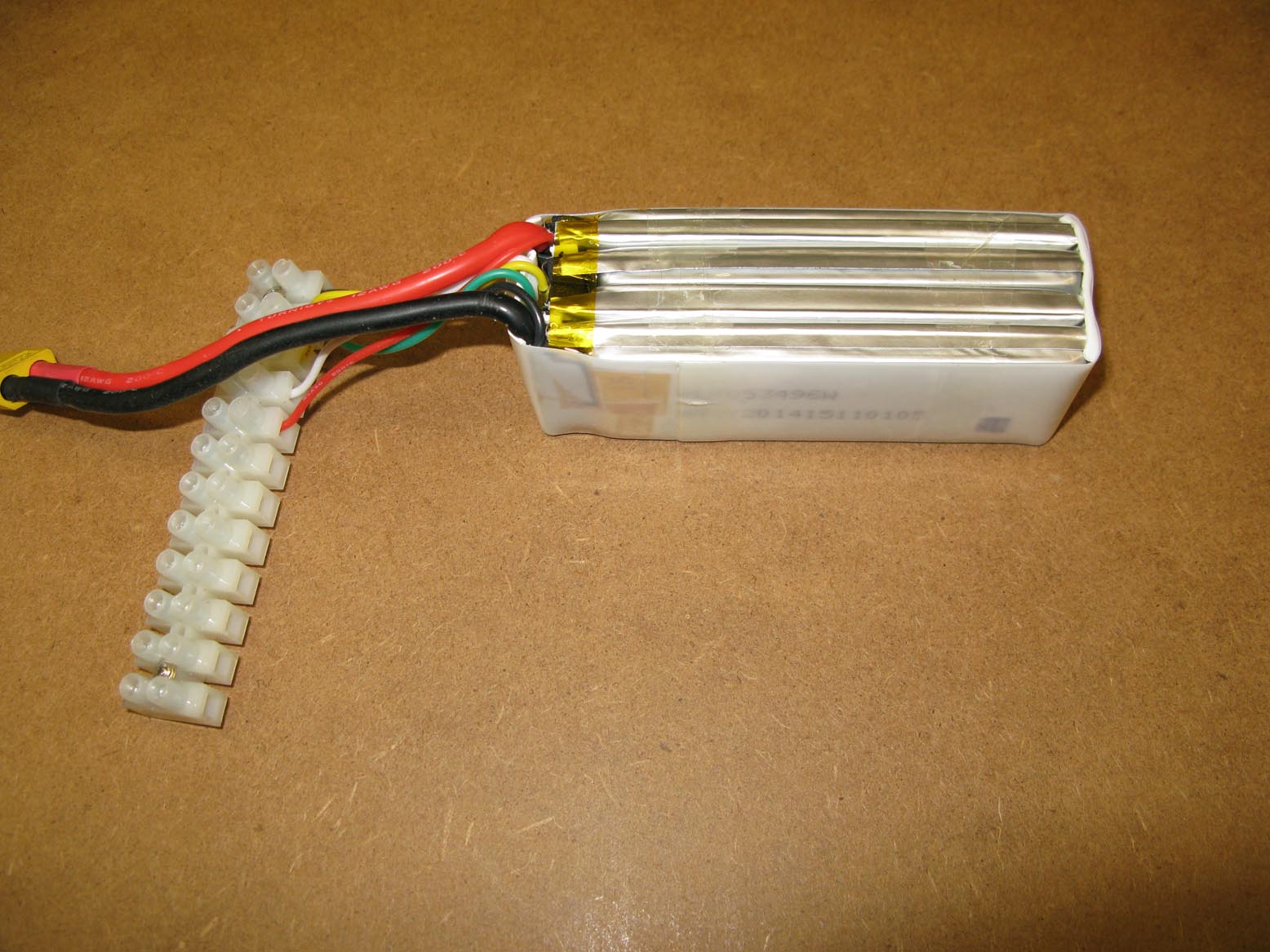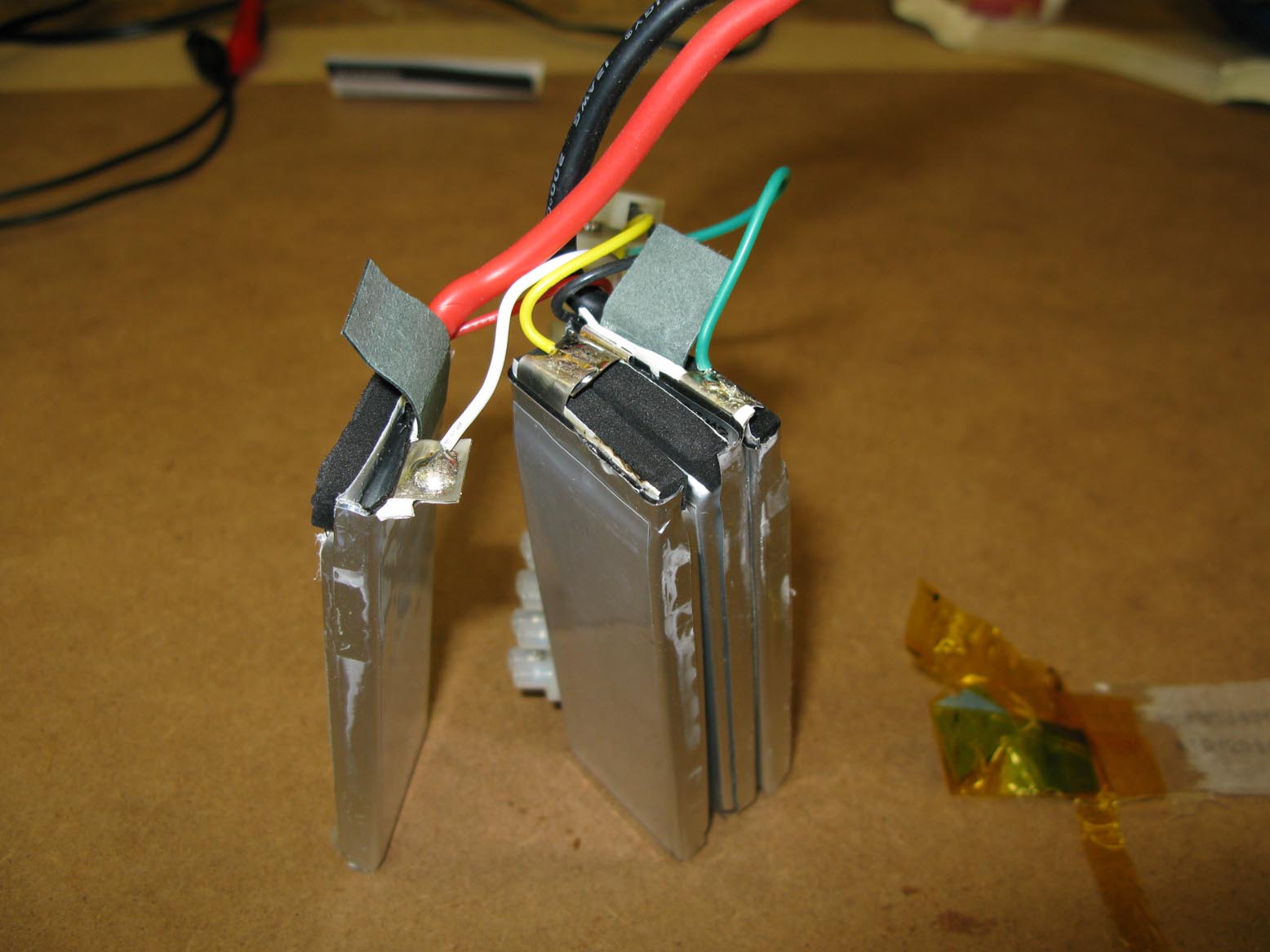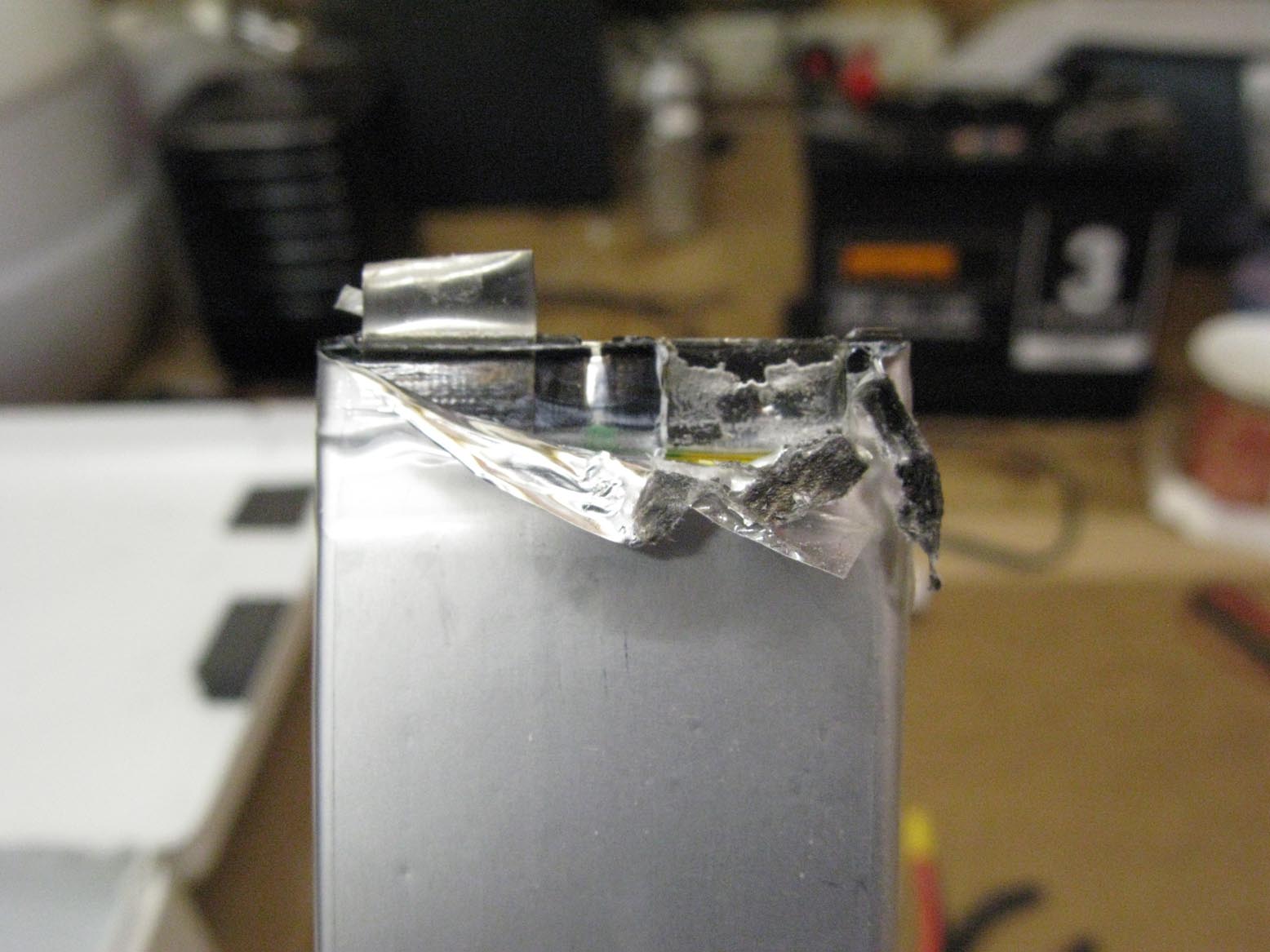Cause: Lipo pack has reached the end of it's useful life.
Fix: Dispose of safely. For details see below.
Introduction
Unlike other forms of rechargeable battery which typically self discharge quickly, Lithium Polymer types can retain charge for long periods. This and the fact that their energy density is very high, means that they pose a risk to handlers if disposed of carelessly in normal waste. There is a need therefore, to fully discharge the packs before disposal, especially as the worst case failure mode involves a high energy flare, i.e. much worse than ordinary fire.
Most Household Waste Sites in the UK around the country now have a used battery steel enclosure, and once LiPos are fully discharged this is their best destination, as batteries disposed of in this way, are passed on to a responsible specialist company who are well aware of the risks posed by partially discharged LiPos. This means that if the user is unable to discharge the batteries, as the skills needed may not be available, they can be disposed of partially discharged but should be placed in a good plastic bag and sealed, with the user making sure that that the battery terminals cannot be shorted, i.e. no bare wires that can easily short. The writer goes one stage further and adds a written note in the bag to advise the handler on the state of charge.
For those who prefer to tackle the discharge process, the internet offers a number of different ideas about how to safely discharge. These are listed in the table below along with the pros and cons of the differing methods.
Balanced Discharge Process
Note: Balanced discharge is preferable as the user can be certain that all cells are totally discharged. This not true with a single discharge via the main terminals of the battery. With single discharge it is possible to have one cell partially discharged at the end of the process and not know about it. Balanced discharge is possible via the balance leads but requires an understanding of electrical circuits and good safety precautions. Balanced dischargers are unavailable to the aeromodeller as a commercial product currently and this means that modellers have to make the needed circuits themselves.
The 4S 2200 mAHR LiPo pack which is discharged as in this article, posed a number of separate problems which made it clear that the process can sometimes be more complex than expected.
It is also clear that the discharge process itself can be difficult to execute well, and that not all aeromodellers have the needed skills. So ahead of writing anything here, it is worth pointing out that if you are in any doubt about being able to execute anything that is written here with accuracy and confidence, do not proceed. Instead, follow the simpler plan above.
On investigation the battery pack concerned was found to have failed in an unusual manner, as follows:
1. Cell 3 showed zero volts against a nominal of 3.7 volts..
2. The total pack voltage showed zero volts against a nominal of 14.8 volts.
3. Cells 1., 2., and 4. all showed fully charged voltage levels.
The data indicates that there is an internal open circuit, isolating cell 3. This means that we have access to cells 1,2, and 4 for discharge via the balance leads but not cell 3 and that the only way to gain access to cell 3 will be by dismantling the battery pack.
This brings us to another important point. If the pack is unbalanced, then total pack discharge methods could well leave residual charge in cell(s) that are at maximum charge and is the reason why the method here is balanced discharge, i.e. discharging all cells sequentially via the pack's balance leads.
For these reasons then, this particular pack has cells 1,2 and 4 sequentially discharged as a first step, and the battery pack is then carefully dismantled to access cell 3 so that it's state of charge can be investigated and dealt with.
It's important to add that the circuit shown in the photographs is a lashup, i.e. something quickly put together on the workbench. It's clear the circuit's arrangement could be improved by further effort but that is not the purpose here. Rather the goal is to show the method.
Safety Considerations
Baring in mind the importance of safety with Lithium Polymer types, during the process of creating and using this lashup circuit the writer paid meticulous attention to the following.
1. This balance leads were cut and terminated one at a time in order to make sure that short circuits via the balance leads could not occur. If you are unsure what this means do not proceed. Use the simpler plan.
2. The writer was aware that when the battery was disassembled in order to locate the cell that was known to be open circuit it was likely that the cell concerned was fully charged, significantly increasing risks. To this end, disassembly was carried out with meticulous care. During the process a metal box was next to the process in case of any emerging problems. If you are unsure what this means do not proceed. Use the simpler plan.
3. Discharge resistors always get hot. The writer ensured they were free of contact with any other item, including fingers. If you are unsure what this means do not proceed. Use the simpler plan.
Circuit schematic:
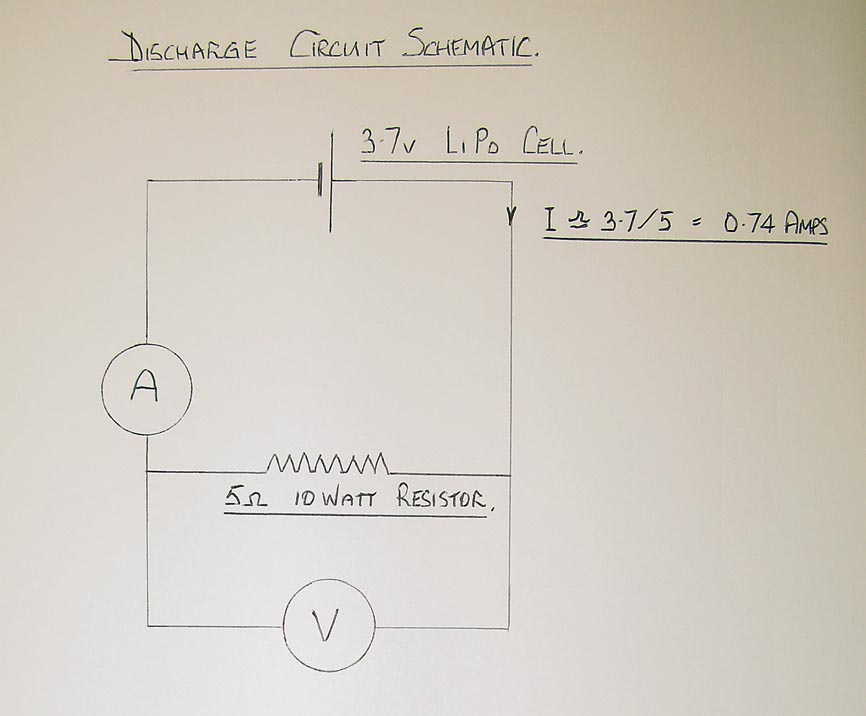
Shows the basic nature of the circuit.
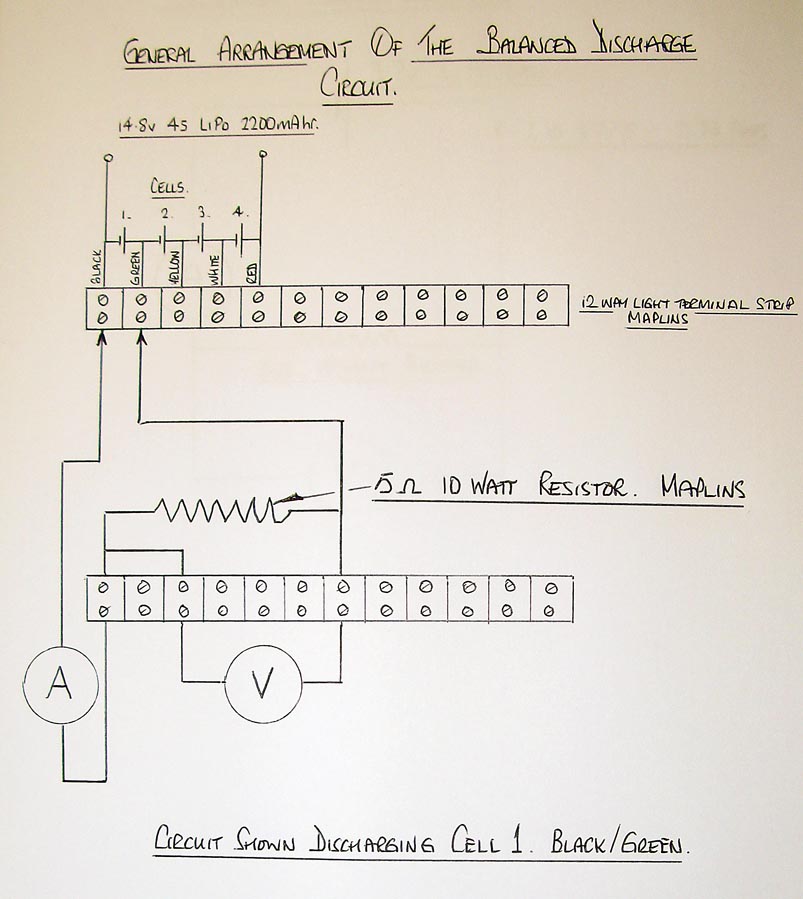
Shows the general arrangement of the circuit, identifying the components used.
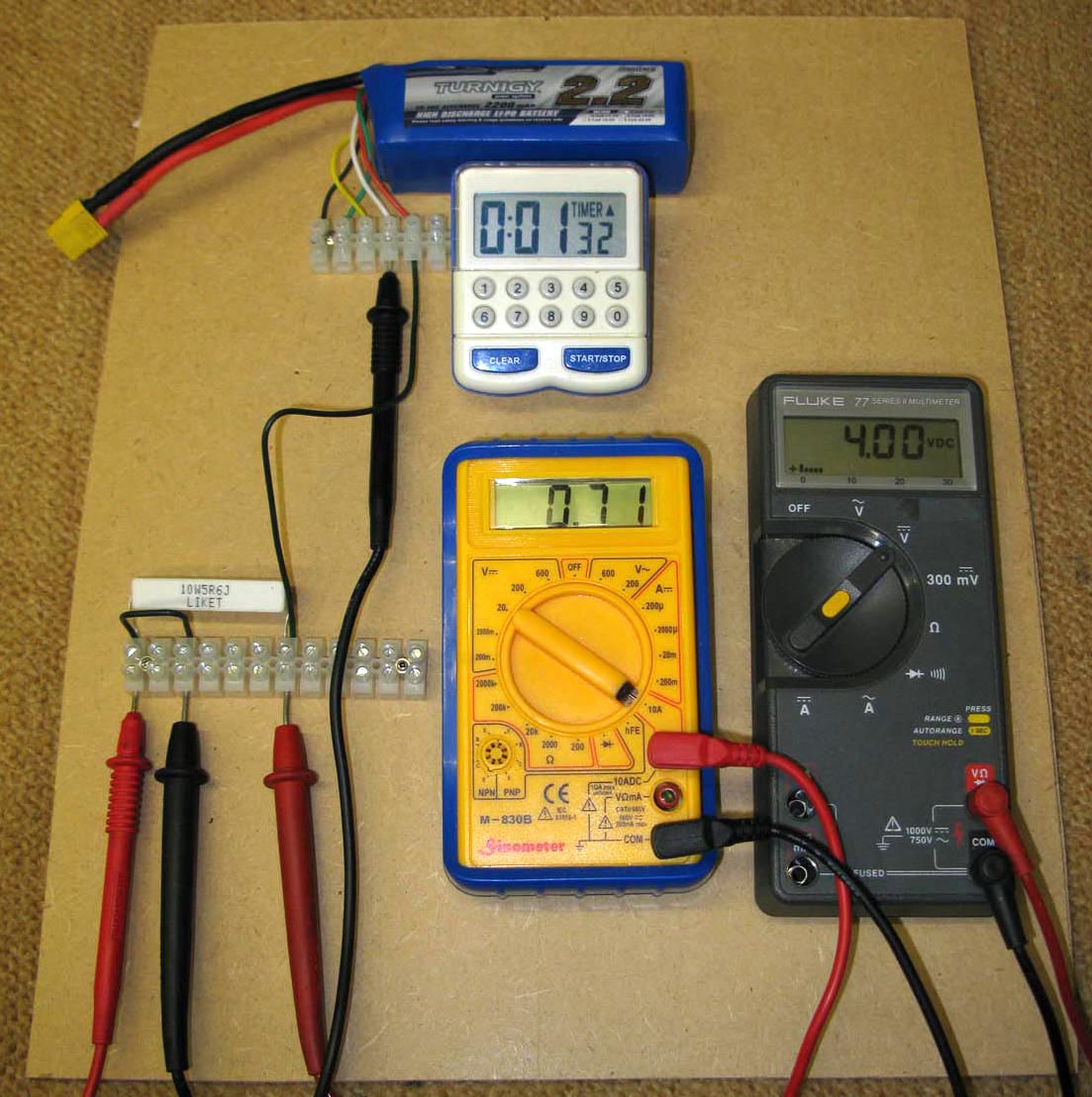
Shows the beginning of the discharge of Cell 4, (red/white)
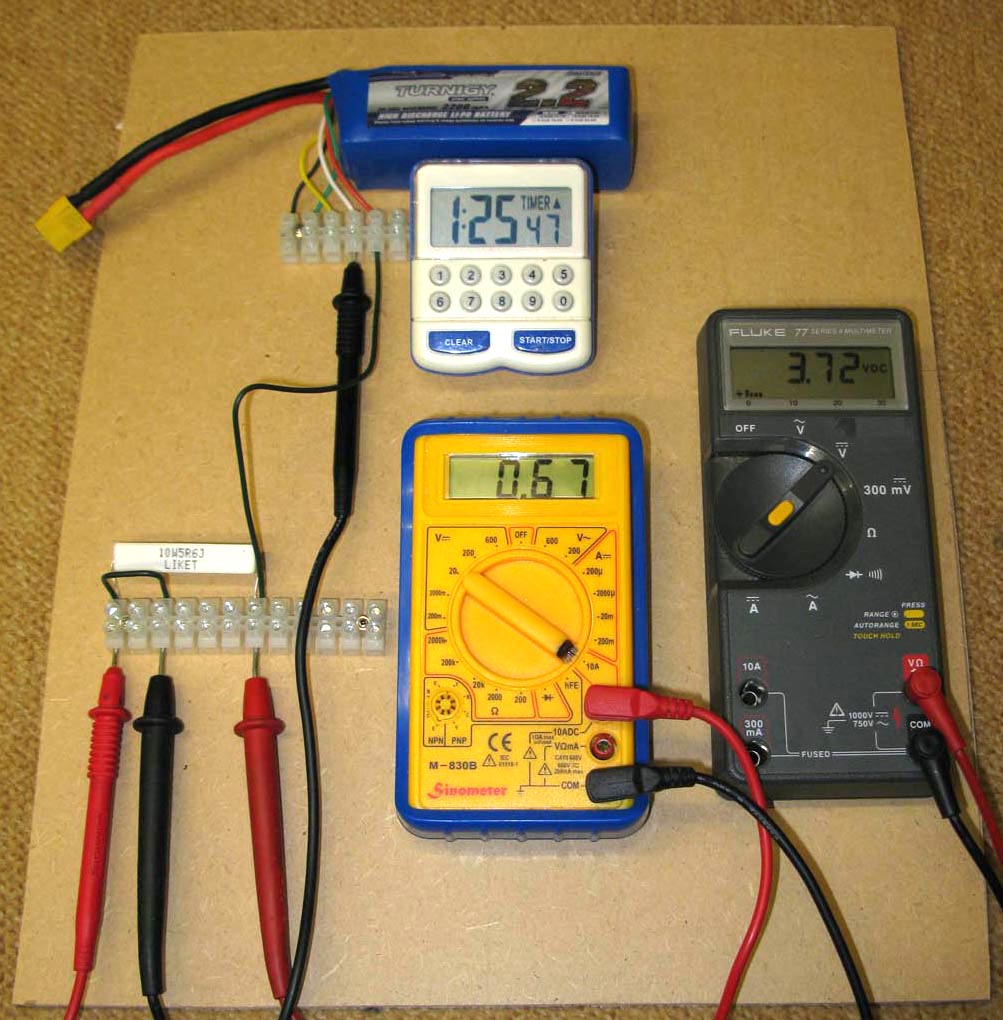
Continuing discharge of Cell 4.
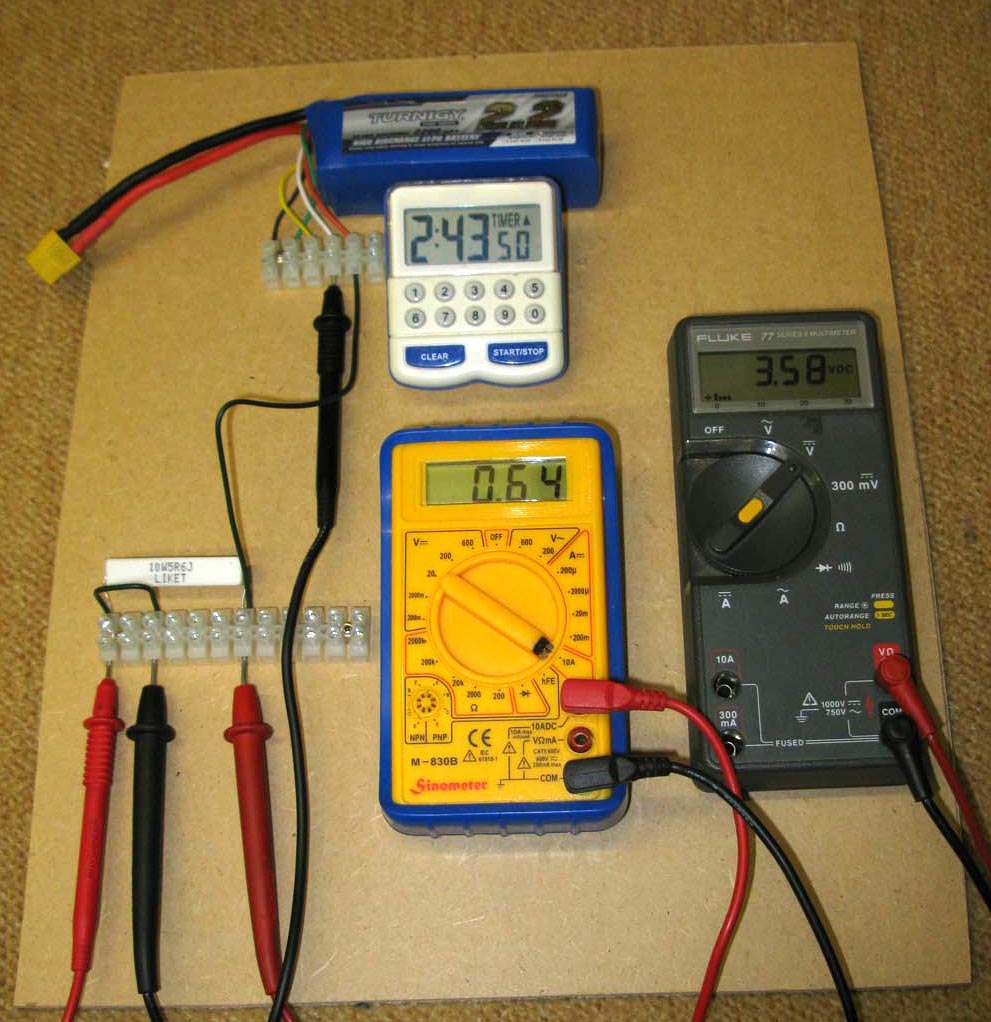
Continuing discharge of Cell 4.
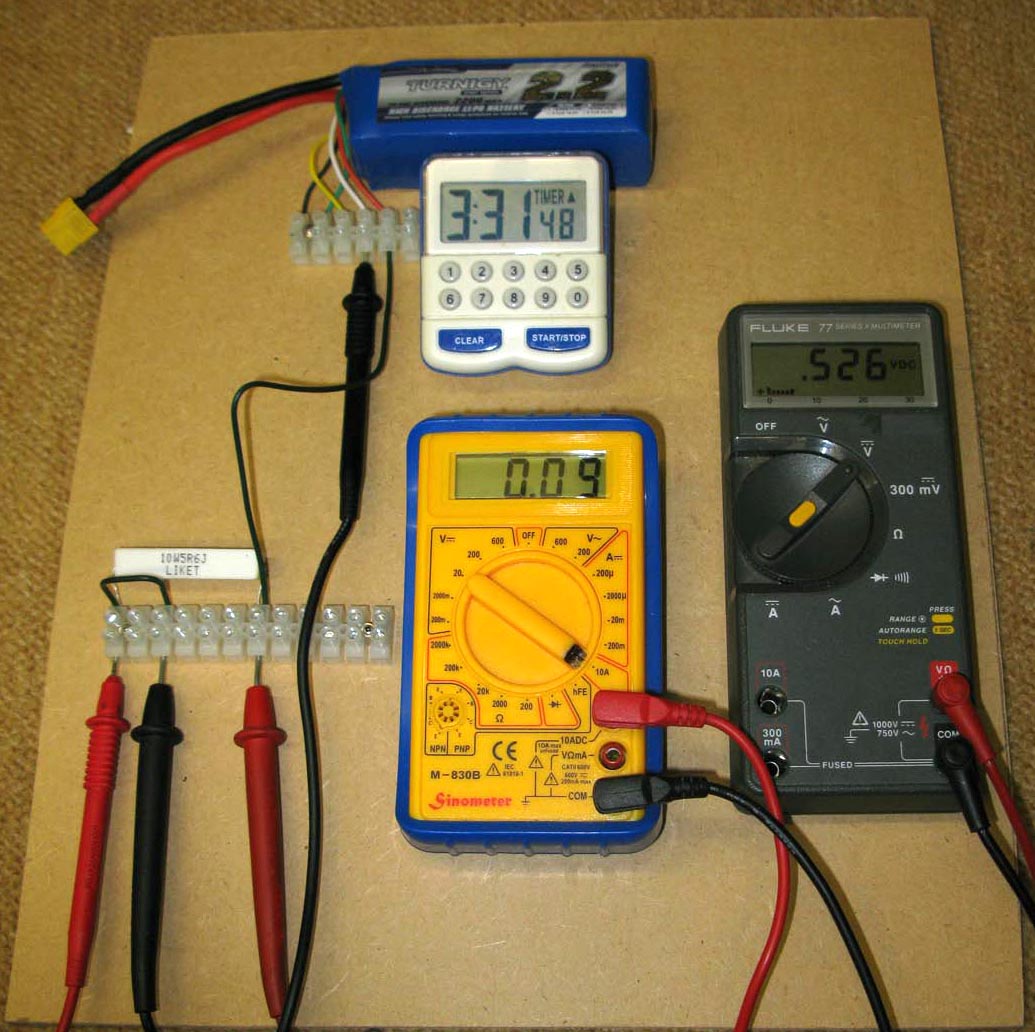
Continuing discharge of Cell 4.
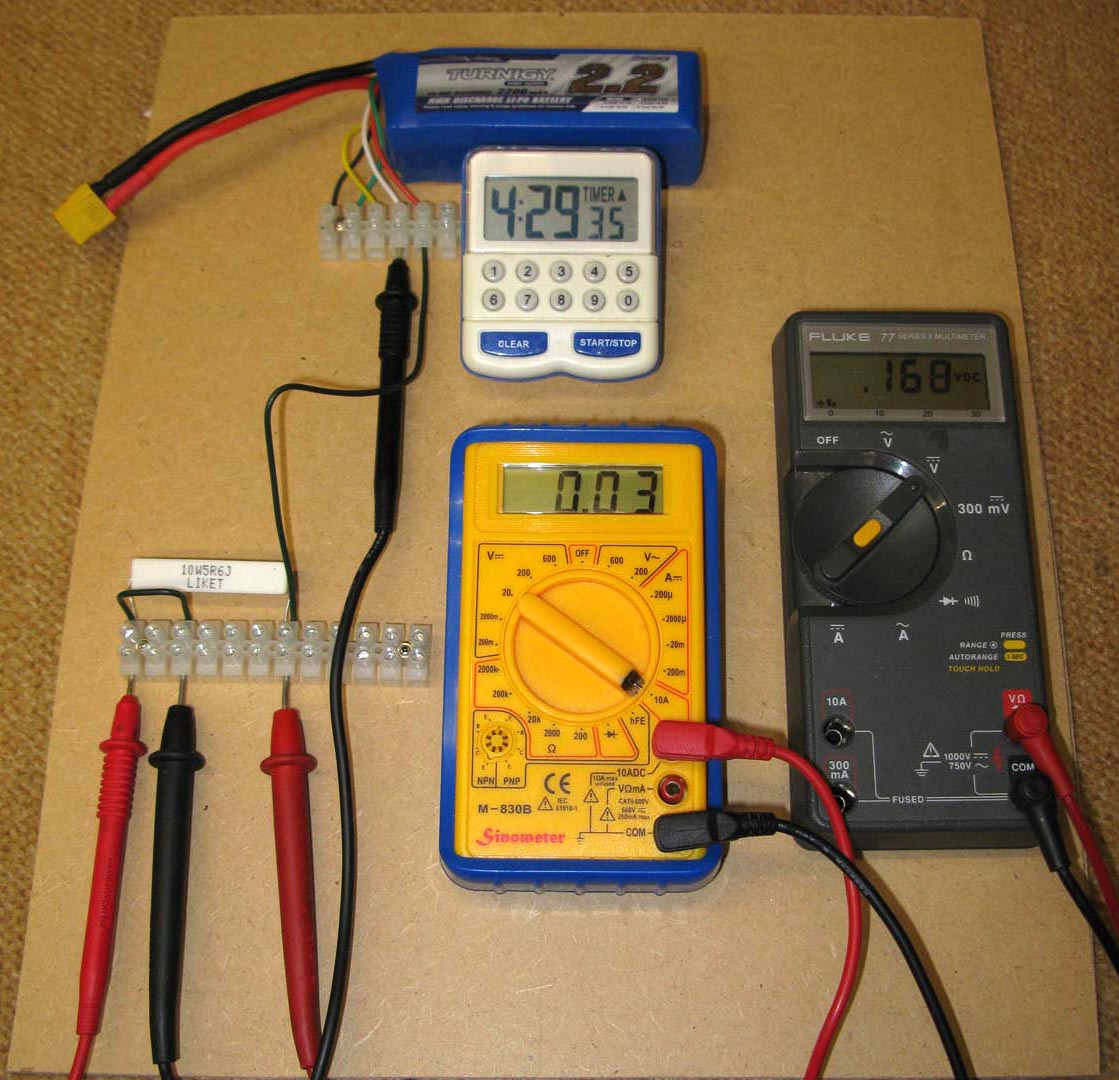
Continuing discharge of Cell 4. (Finally discharged the cell down to 2 millivolts)
Beginning the strip down of the 4S 2200 mAhr Lipo.
Open Circuit Cell Identified.
Manufacturing defect identified. Cell was fully charged. Failure line is clear.
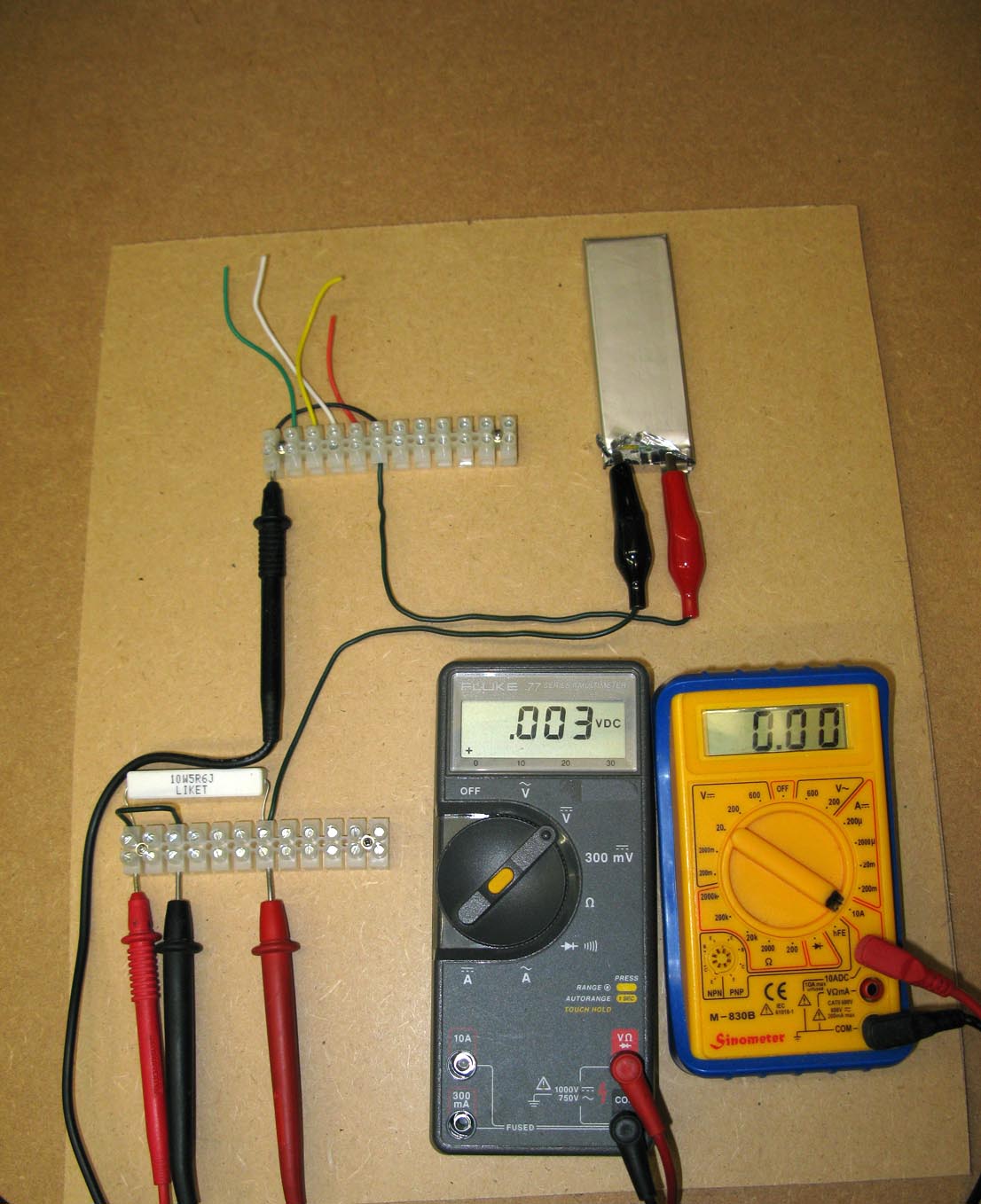
Open Circuit cell discharged down to 3 millivolts.
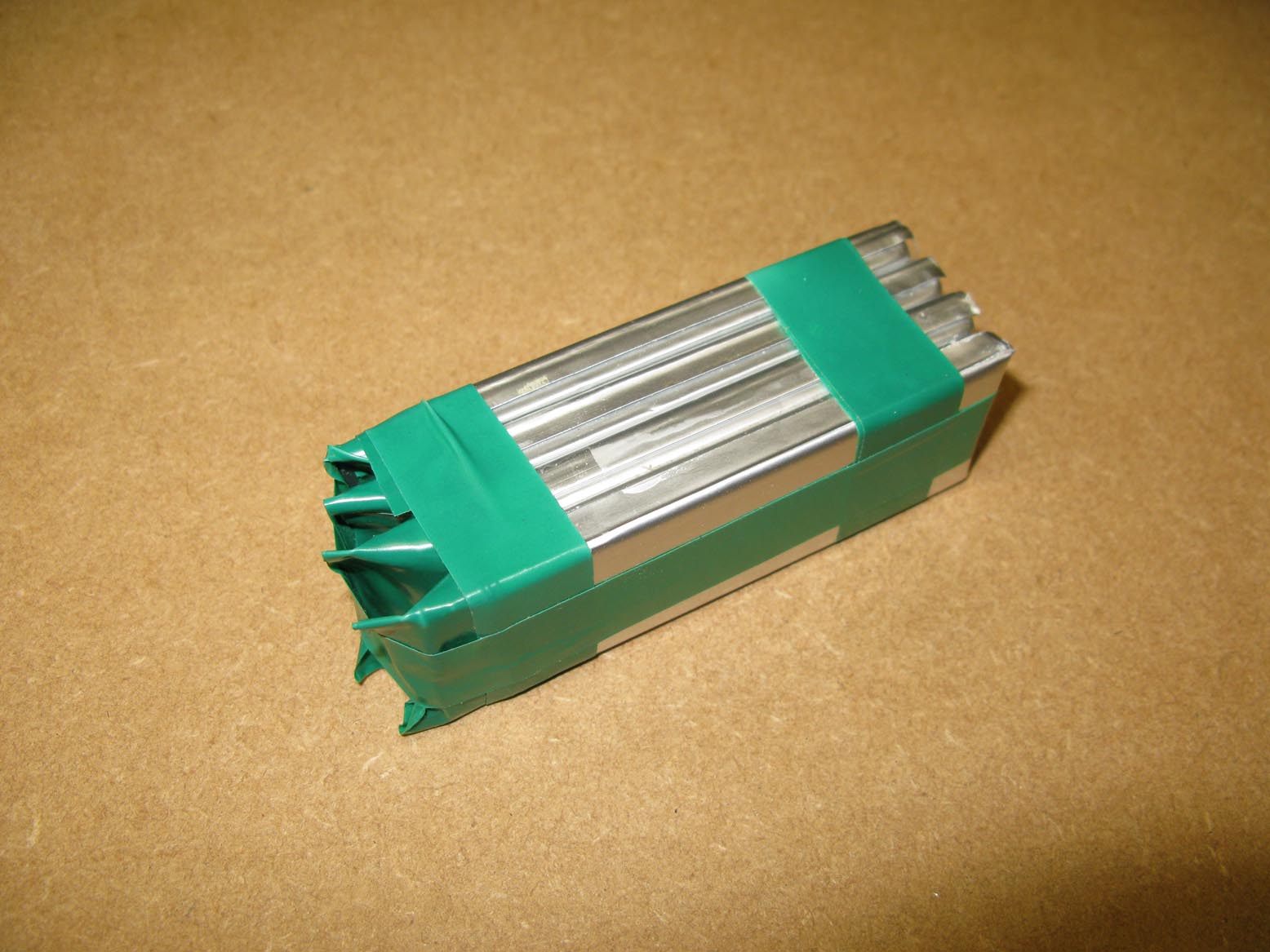
Cells taped up.
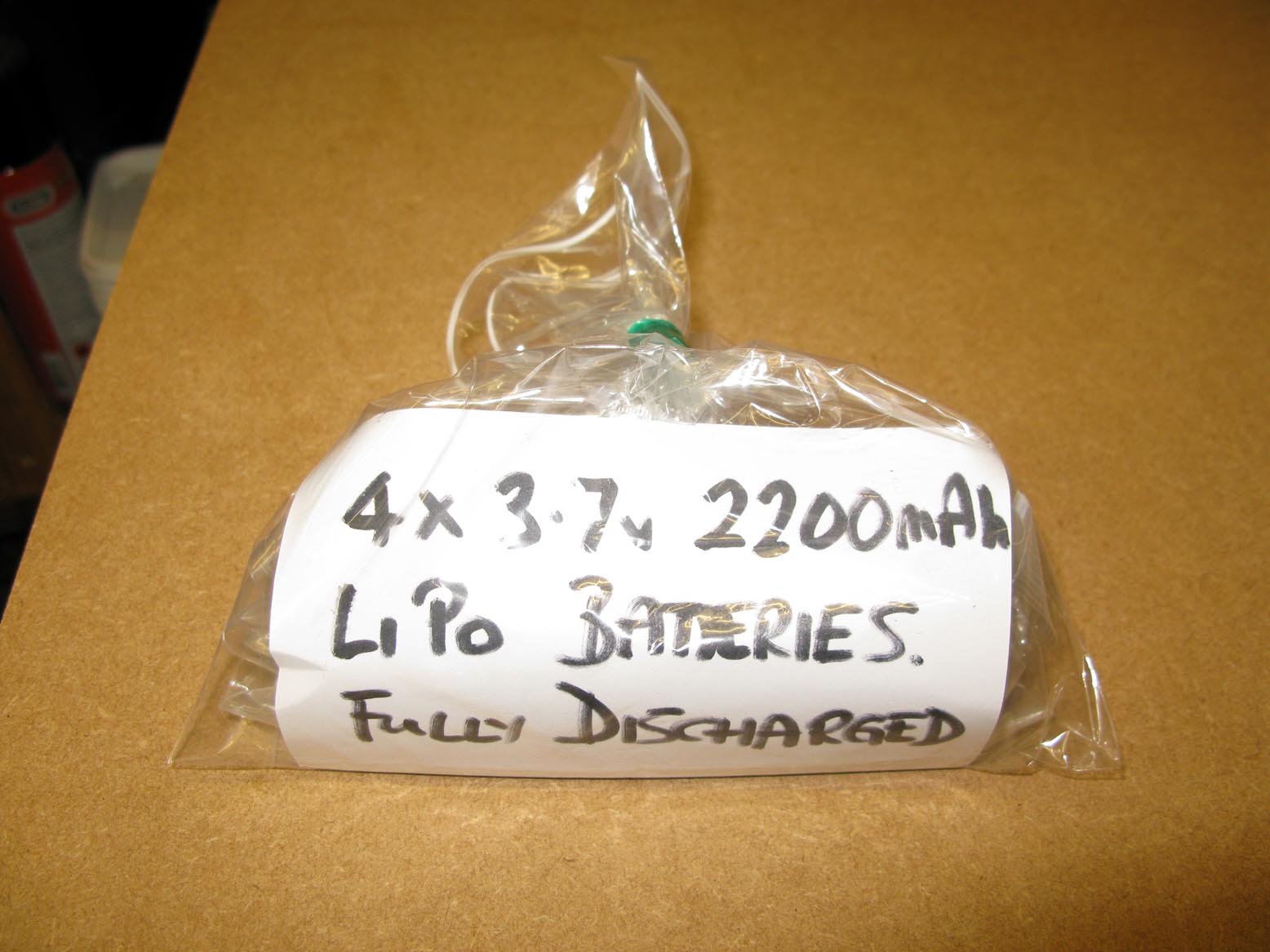
Cells bagged and labelled for disposal at Household Waste Sites battery disposal bin.
| Discharge Method | Pros | Cons | Safety |
| By measurement, using a voltmeter and ammeter as in the article above. | Very thorough. Can safely balance discharge all cells. |
Takes time as the discharge current levels must be suitably low as balance leads are used for the discharge process. Requires electrical knowledge and understanding of simple circuits. |
As discharge currents are low, zero heating occurs in the LiPo battery during discharge, making the process safe. |
| Using a suitable automotive bulb as a load across the main power terminals of the LiPo. | Can be successful. |
Takes time as the discharge levels must will be low. Requires electrical knowledge and understanding of simple circuits. Unbalanced discharge. No measurements take place. |
Can be safe. The risk is unbalanced discharge can lead to cells which are not discharged at the end of the process. |
| Shooting the LiPo batteries with an air rifle. | None. | Unsafe. | Unsafe. |
| Puncturing the LiPo batteries with a nail or similar object. | None. | Very unsafe. | Very unsafe. |
| Immersing in salt water solution after a main discharge cycle has taken place in order to drain away all residual charge. | Can work. |
Can be left partially charged if the soaking is not long enough. No measurements take place. Lithium salts in solution from the process get back into the water system. Lithium is used to trace leaks so there is a negative effect to this. |
Partial charge puts handlers at the specialist disposal centre at risk. |
| No discharge. | Can work if the user bags and labels the LiPos correctly, as specialist handlers are aware of the risks with these types of cells. |
If the labelling and packaging are inadequate for a none discharged Lipo, then the risks are much higher for the handlers. |
A final alternative to this given the safety risks, is to get another modeller who has the skills, to help with the discharge process. |
